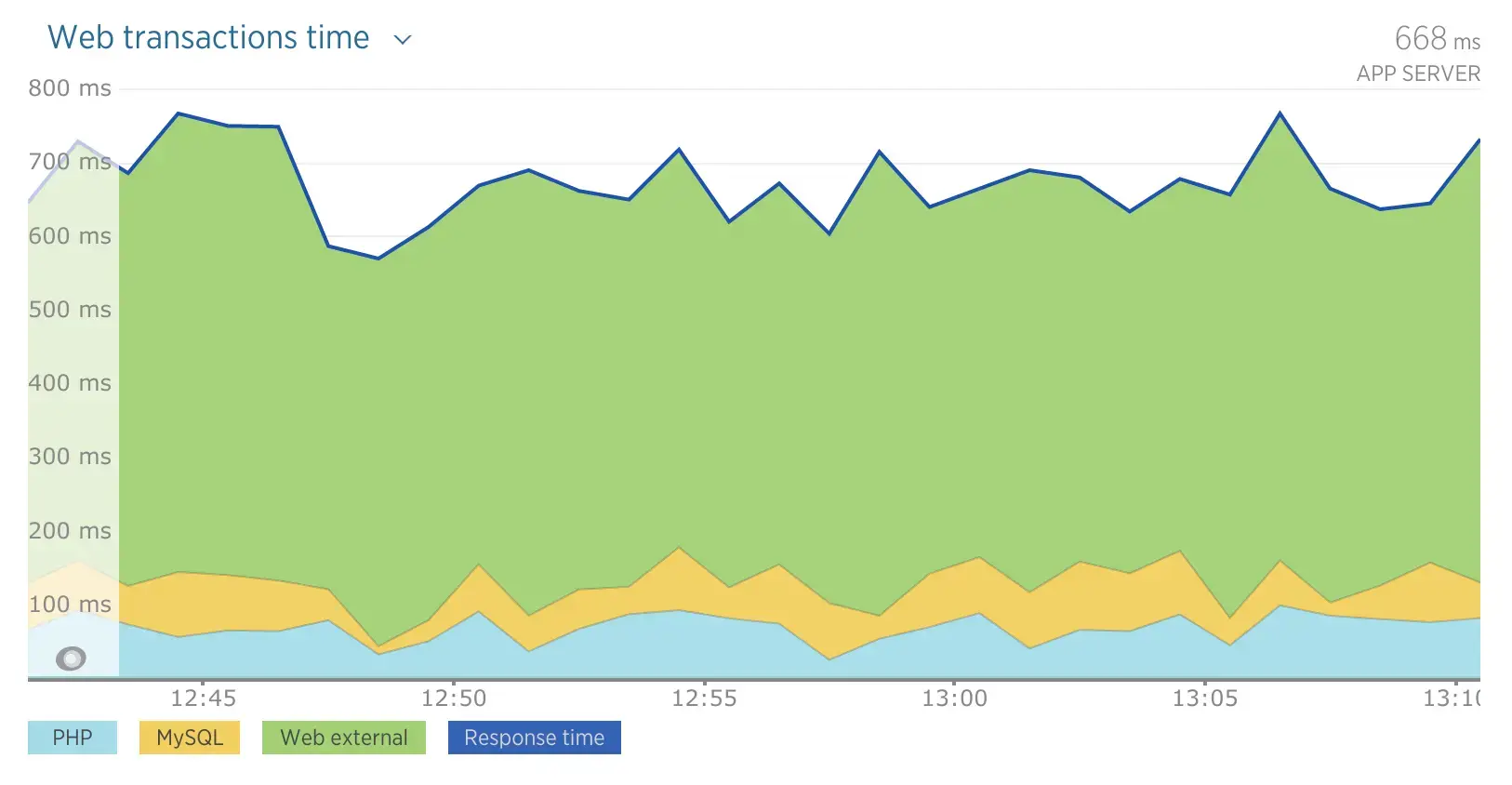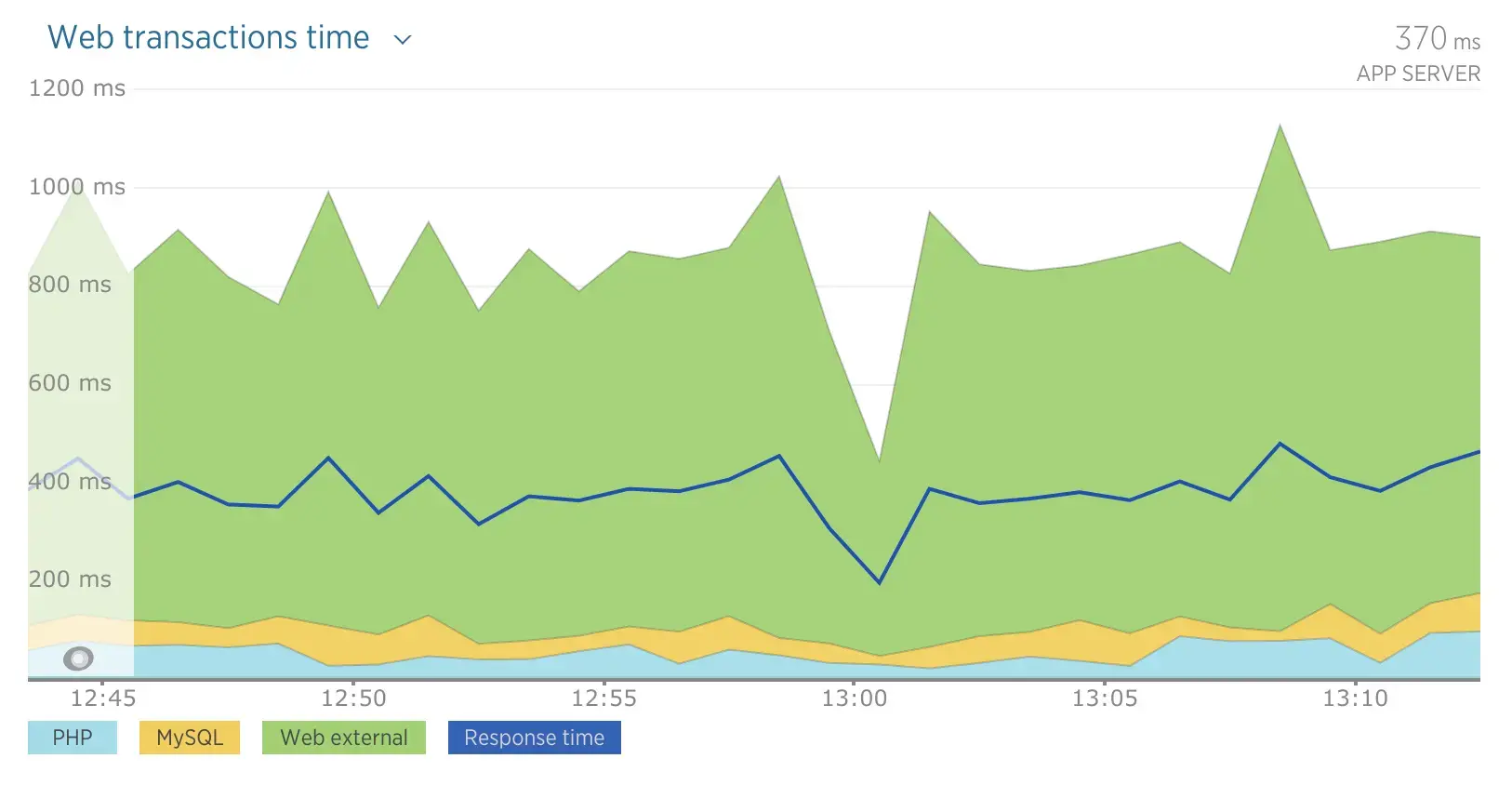New Relic supports versions 5, 6 and 7 of the Guzzle HTTP client library.
The Guzzle library allows both sequential and parallel requests. This page describes how each type of request will appear in the Summary page in the New Relic UI. To discover which call was the slowest, view the External Services page which displays timing for individual external calls.
Sequential requests
This PHP code makes multiple sequential requests with Guzzle:
$client = new \GuzzleHttp\Client;$response = $client->get('http://YOUR_SITE.com/api/foo');$client->delete('http://YOUR_SITE.com/api/foo/'.$response->getBody());This code would appear in the New Relic UI as:

one.newrelic.com > All capabilities > APM & services > (select an app) > Overview > Web transactions time: Sequential requests with Guzzle in the New Relic UI.
Response time is shown as the dark blue line. The green web external time represents time spent in the Guzzle library. Because the requests were made sequentially, the response time is equal to the total time spent in PHP, MySQL, and web external activities.
Parallel requests
This PHP code makes multiple requests in parallel by unwrapping an array of promises:
$client = new \GuzzleHttp\Client;
$promises = [ $client->getAsync('http://YOUR_SITE.com/api/foo'), $client->getAsync('http://YOUR_SITE.com/api/bar'), $client->getAsync('http://YOUR_SITE.com/api/quux'),];
\GuzzleHttp\Promise\unwrap($promises);This code would appear in the New Relic UI as:

one.newrelic.com > All capabilities > APM & services > (select an app) > Summary > Web transactions time: Parallel requests with Guzzle in the New Relic UI
The green web external time represents time spent in the Guzzle library. Because the requests were performed asynchronously, the total time spent in PHP, MySQL, and web external is greater than the response time.
Timing with Guzzle 6 and 7
Unlike previous versions, Guzzle 6 and 7 do not generate an event when a request is sent. Instead, the agent begins timing a request when the request object is created. If a request object is created and additional work is done before sending, New Relic may report that the request took longer than it actually did.
Disable Guzzle support
To disable Guzzle support:
- Add
newrelic.guzzle.enabled = falseto yournewrelic.inifile. - Restart your web server (Apache, Nginx, PHP-FPM, etc.).